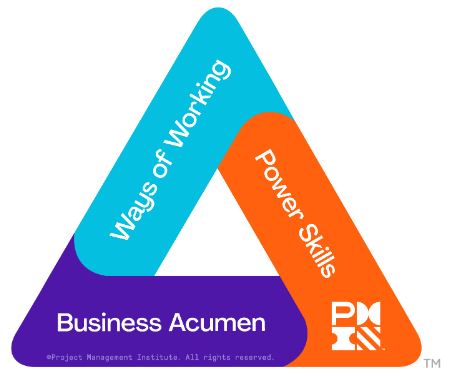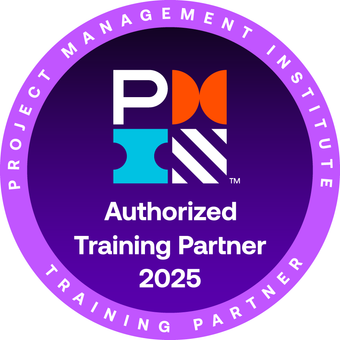
PMI Talent Triangle: Power Skills (Leadership)
Welcome to the PMO Strategies Podcast + Blog, where PMO leaders become IMPACT Drivers! Today you will find out how to be more clear and direct in your communication style, this is step 5 in the IMPACT PMO Mindset. If you haven’t listened to episode 000, the Introductory episode or 001, The PMO Reset, 002 Instill Focus, 003 Measure Outcomes, 004 Perform Relentlessly, or 005 Adapt to Thrive, whew – definitely go back and listen to or read those first. Doing so will set the framework for how we landed here, on mindset as the primary step and everything that you need before you can communicate effectively.
Language is Key
The key to communicating with purpose is ensuring that your communication is clear, direct, and drives actions and decisions. For any communication to be effective, we must start by ensuring we are speaking the same language. When you talk to people about the PMO and the IMPACT you’re trying to make with your PMO, make sure you are speaking the language of your stakeholders and using terms that they understand to avoid barriers to communication. Talk about outcomes, IMPACT, return on investment, and the deliverables they’re looking for with their projects. We must want to speak the language of our audience. We cannot throw a lot of PM speak at stakeholders which will only cause their eyes to glaze over. Instead, speak in terms of the WIIFM (what’s in it for me) for the person we are talking to. They need to hear you talk about the “whys” of your PMO, not the “what’s” that won’t make much sense to them anyway.
1. Speak their language
Communicating with purpose means you’ve got to stop talking project management at business leaders and stakeholders. When we start throwing around a lot of PM speak at our stakeholders their eyes glaze over and they feel that you don’t get them, and they don’t get you. Have you ever seen two people that speak different languages try to communicate or solve a problem? It’s extremely challenging and leaves both parties unsure if they are on the same page. When you start talking about the triple constraint, project management process, templates, etc. to the typical non-PM stakeholder, you run the risk that the two of you will not understand each other. You might be losing a critical opportunity to have an effective conversation about your PMO and how it’s driving IMPACT because you’re getting stuck in by a language barrier and they can’t follow along. We need to use language that resonates with them and use terminology that they are familiar with. This means we should stay away from speaking about the mechanics of the processes we are using and instead talk to them about outcomes, IMPACT, and return on investment. The “why” you are doing the PMO in the first place and the “why” they care. Talk about their pain points and get specific on the way they will be able to function and feel when you’ve solved those business problems. We talk to them in their language so that we eliminate communication barriers and stay in sync with our stakeholders.
2. Tie PMO Deliverables to IMPACT
Get stakeholders’ attention by connecting everything you are doing with the PMO to the outcomes they are looking to achieve. That means that you want to be able to tie all the services you’re providing directly to an IMPACT that each service is having on the organization. We must build the brand and credibility of the PMO by ensuring that people understand the PMO in terms of how it’s delivering the organizational strategy and solving business problems quickly. Instead of saying that you are building metrics and dashboards, talk about the outcome you are creating, better transparency to drive educated and informed decision-making. Instead of saying that you are creating standards and process, talk about how you are creating greater predictability and reliability so that leaders can more effectively plan for IMPACT and business transformation. This isn’t marketing speak. This is what you are doing. It’s just being communicated in terms that everyone can understand and get behind.
3. Avoid Information Indigestion
IMPACT PMO Leaders know that when they are having conversations with people, whether they are communicating project status or trying to drive a decision, they don’t overwhelm them with tons and tons of data and information. Have you ever been in a meeting and started to zone out because someone is overwhelming you with facts, data points, and information that is way more than you can possibly process in one sitting? How about those meetings where a stakeholder is drilling down into some irrelevant detail on the bottom of page four of a status report and you know that data is completely irrelevant to the decision you need from them before the meeting can end? The problem is that we put this information in front of them and now we must suffer the consequences of our actions. If we don’t want them to get stuck there or get so overwhelmed with information that they cannot focus on what we need to keep the team moving, then we should avoid putting everyone in that painful position in the first place. Instead, we need to get very laser-focused on providing them with the information they need to drive decisions and then STOP. Stop talking, stop going into further detail, stop putting data in front of them that is not pertinent to the decisions we need made right now. If we throw everything at them, they can’t digest it all anyway and will just spin in circles or take you off track, so why waste the time? Everyone has much better things to do with their time.
4. Respect their Time
IMPACT PMO leaders also know that by communicating with purpose, we are respecting everyone’s time. You do not need to overwhelm people or create the environment for unsolicited feedback and comments that will just confuse everyone by abusing the CC line of an email. If you CC someone, explain that you are just keeping them informed. If you send an email to someone and just say “FYI,” expect that they probably won’t even read it. Keep your communications meaningful and tell them what to look for, what they specifically need to know, and what you want them to do. Also, expect that if you write a 5-page email, it won’t get read. People don’t have time for that and if it takes that many words to explain it, you probably would be a lot more efficient by having a quick conversation. You want to be clear, specific, focused and get right to the point of what you need in your emails so that you can keep everybody moving along. Respecting their time (and yours) also means you are not having 45 meetings in a week just to get status. That is a huge waste of people’s time. IMPACT PMO Leaders are very diligent about the kind of meetings we have, the kind of communications that they disseminate stay focused on the ultimate outcome, which is driving greater throughput and faster realization of benefits. Get. It. Done. to get the highest ROI.
5. Drive Actions and Decisions
With every communication you create, make sure that you ask yourself, “How will this communication clearly explain what we need and drive actions or decisions?” If the team is just going through the process of meetings and reporting because they have “always done it that way,” challenge them. Make sure that you can tie everything you do and create to the IMPACT it will immediately have on driving decisions quickly. You must keep your PMO, portfolio, and projects moving forward at all times to maximize ROI and throughput. I apply what I call the Goldilocks Method. Not too much, not too little, just the right amount of information to facilitate productivity. Tell them what they need to know and then STOP. Stop talking, stop sharing, stop reporting, stop providing content. Get to the point quickly so you can Get. It. Done.
T hanks for taking the time to check out the podcast!
hanks for taking the time to check out the podcast!
I welcome your feedback and insights!
I’d love to know what you think and if you love it, please leave a rating and review in your favorite podcast player. Please leave a comment below to share your thoughts. See you online!
Warmly,
Laura Barnard








